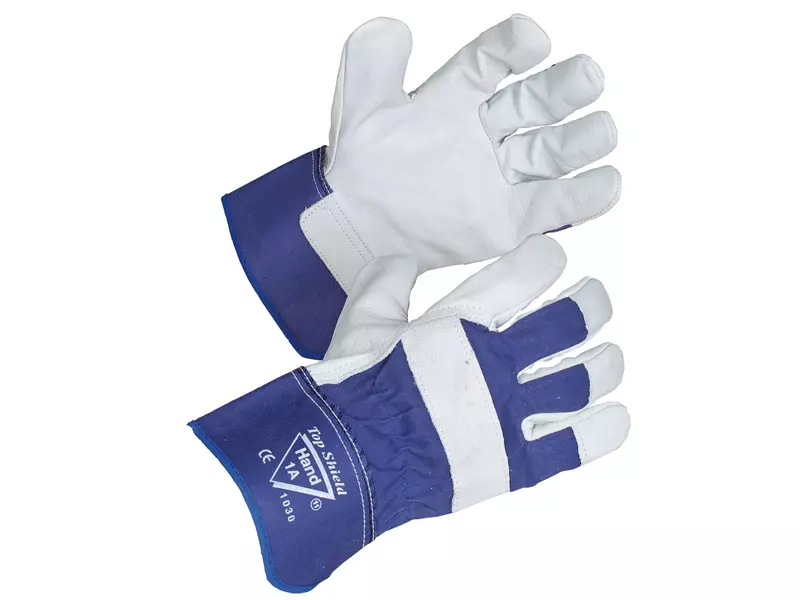
Features You'll Love

Support · Reinforced Safety Cuff
Indicates reinforced areas or structural enhancements that provide extra durability and protection in high-stress zones like cuffs, palms, or finger areas.

Cuff Style · Open
Determines how the glove secures around the wrist, affecting fit, protection from debris, and ease of putting gloves on and taking them off.

Glove Features · Reinforced Fingertips
Reinforced fingertips deliver superior durability and protection, extending glove life and safeguarding your hands.

Palm Material · Cowhide Leather
The material used on the palm side of the glove, affecting grip, durability, protection level, and comfort during use.
Hand1A
Top Shield Leather Gloves, 12 pairs
Top Shield Leather Gloves, 12 pairs
(21)
58,68 €
Price per 12 pairs
4,89 € / pair
Choose size
Shipping fee is 7,94 € for orders under 80,00 €
Features You'll Love

Support · Reinforced Safety Cuff
Indicates reinforced areas or structural enhancements that provide extra durability and protection in high-stress zones like cuffs, palms, or finger areas.

Cuff Style · Open
Determines how the glove secures around the wrist, affecting fit, protection from debris, and ease of putting gloves on and taking them off.

Glove Features · Reinforced Fingertips
Reinforced fingertips deliver superior durability and protection, extending glove life and safeguarding your hands.

Palm Material · Cowhide Leather
The material used on the palm side of the glove, affecting grip, durability, protection level, and comfort during use.
Product description
The product description has not been specified